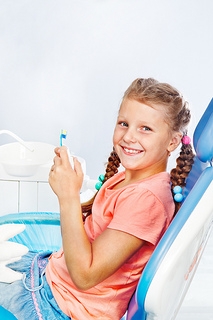June 15th, 2017

Although using mouthwash is certainly not the equal of brushing and flossing, it does have benefits for your dental hygiene. If you use mouthwash regularly, you should find out which type is best suited for your needs. Here are some things to think about the next time you’re at the store.
The first item to weigh is why you want to use mouthwash. If the reason involves a high risk for cavities, you should focus on a mouthwash that contains fluoride. Make sure to double-check the label, because some mouthwashes do not necessarily include fluoride.
If you’re looking for a mouthwash to fight gingivitis, select an oral rinse with antibacterial properties. Make sure to read labels and avoid picking one that contains alcohol. Antibacterial mouthwash would also be best for a patient who has periodontal disease.
Another option is prescription mouthwash. These should be discussed with Dr. Thomas Shipley and/or your pharmacist in order to avoid negative side effects. Pay close attention to the directions regarding how much to use and for how long. Keep in mind that some brands may lose their effectiveness if you use them on an ongoing basis.
For children, you can find a mouthwash that changes the color of plaque on their teeth. This is a fun way to help them understand how well they are brushing, and what areas they need to focus on. It can even be a tool for adults who have trouble reaching certain areas of their mouth.
While mouthwash is generally considered as a safe means to improve your oral health, you need to keep certain things in mind. Avoid using any mouthwash that has alcohol in it. If you are using a strong one, it can reduce your sense of taste over time. Be wary of a mouthwash that claims it can loosen plaque; this is not accurate and can mislead consumers.
We hope these simple suggestions will help you the next time you’re at the store. Make sure you pick the right mouthwash to keep that healthy smile! Feel free to contact Dr. Thomas Shipley at our Peoria, AZ with any questions you may have.
June 8th, 2017

At Shipley Orthodontics, we have been creating beautiful smiles for years. Whether you or your family have visited Dr. Thomas Shipley and our team for a single visit or have been loyal patients throughout the years, we would love to hear your thoughts about your experience! In fact, we encourage you to leave a few words for us below or on our Facebook page!
We look forward to reading your feedback!
June 1st, 2017

If you are wearing braces and are planning a vacation, our team at Shipley Orthodontics would suggest that you be prepared. We put together a list of items that will be handy to have with you at all times while you are out of town. They include:
- Toothpick, flosspick, or other interdental cleaners
- Travel toothbrush
- A water bottle or a mini bottle of mouth rinse
- Orthodontic wax to help with discomfort from protruding wires
- A small mirror for examining any possible issues in your mouth
Putting these items together in a “braces/oral hygiene kit” may be wise. You may even buy pre-made braces kits. Please ask us for more information.
If you happen to be on vacation and experience problems reaching our office, we suggest going online and searching for orthodontic practices in your area. Most orthodontists will lend a helping hand to another orthodontic patient and get him or her out of pain or discomfort.
We also suggest avoiding the following foods to prevent broken brackets and/or wire distortion while you are on vacation:
- Chewy, sticky, or gummy food
- Apples, pears, and other whole fruits (cut fruit into wedges before consuming)
- Bagels and hard rolls
- Corn on the cob
- Hard candies
- Hard cookies or pretzels
- All varieties of nuts, including peanuts, almonds, and cashews
Finally, if you are wearing clear aligners and happen to lose your tray, don’t worry! Simply put in either the previous tray or the next tray and contact us as soon as you get home!
Follow these tips and you can have a worry-free vacation! Please give us a call if you have any questions!
May 25th, 2017

Our green office offers many benefits to patients. And just because we’ve gone green doesn't mean that we won't be able to provide the same services as a traditional office. In fact, our goal is to provide the same (or better) services as a regular office, but services that act in harmony with the body and world around us. Less waste, fewer chemicals and heavy metals, and reduced energy consumption; these are traits that define a truly green office.
Some of the benefits you'll experience as a patient at our green Peoria, AZ office include:
- Better air quality – There's a focus on using renewable and natural building materials, paint that is free of volatile organic compounds (VOCs), biodegradable cleaning supplies, and formaldehyde free materials for cabinetry. This leads to cleaner air in the office for patients and their families.
- Less radiation – Digital X-rays replace old film based X-rays and expose patients to 90 percent less radiation. Digital X-rays are also convenient for patients since their images can be viewed right on the computer screen instead of on a physical printout.
- No need for paper – Many offices have gone "paperless." You'll get any pertinent paperwork via email, reducing paper waste and saving you time. Patient records are also stored digitally, doing away with the wall of patient folders and making for easier and quicker record retrieval.
- Fewer chemicals – Green offices take advantage of chemical-free sterilization by steam and clean their tools using energy-efficient washers and dryers. Biodegradable cleaning solutions instead of toxic chemical cleaners are used around the office, too.
- Reduced heavy metal exposure – Biocompatible, non-allergenic, non-metal materials like porcelain and ceramic are preferred in a green office over the heavy metals (nickel, titanium) used in traditional offices. This is particularly important in the case of appliances that are used over long periods of time, like dental implants or veneers.
Dr. Thomas Shipley and our team hope you realize the positive effect a green office can have on your health, as well as that of the environment. Our office is dedicated to bringing you the cleanest, safest, and greenest technologies the industry has to offer, and we're happy to share how our processes differ from other offices!





 Website Powered by Sesame 24-7™
Website Powered by Sesame 24-7™